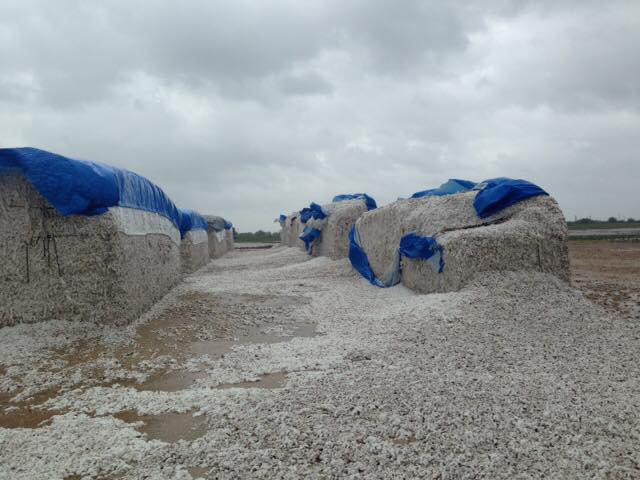Take away hurricane losses in Georgia and Texas, and the cotton industry could still pull 21 million bales from U.S. farmland in 2017. If that estimate holds, there could be a 5.5 million bale carryover into 2018 and a potential drop in cotton prices.
With uncertainty hovering over the market road ahead, John Robinson, a cotton economist with Texas A&M University Extension, suggests producers should be prepared to take advantage of unexpected rallies and shield themselves from unexpected sell-offs.
Weather was a big player in the 2017 cotton crop, and according to the National Oceanic and Atmospheric Administration (NOAA), it could be a significant factor again in 2018. NOAA is predicting La Niña conditions from November to May, which could bring an extended period of dry weather.
“Relatively low feed grain and wheat prices suggest to me that 2018 cotton acreage will be similar to 2017, but whether there is a La Niña drought in Q1 and Q2 could be a big wild card for Texas cotton,” Robinson explains. “If there is a La Niña drought, the planted acreage will likely increase, year over year.”
Hurricane Irma inflicted a projected 10% loss on Georgia’s 2.9 million bale crop. Hurricane Harvey’s damage to Texas cotton is still unknown, but Robinson estimates 200,000 bales on the stalk were lost and another 200,000 bales on the stalk were degraded. (In addition, an undetermined quantity of bales was lost or degraded in post-harvest modules.)
As Texas cotton growers face losses from the effects of Harvey, the loss is compounded by a bitter irony: Gulf Coast growers were on the cusp of a fine crop to make up for recent years of struggle.
With Harvey bearing down, Bob and Robby Reed had corn, grain sorghum and rice cut and safely stored. Pickers rolling, the father and son had 500 acres of cotton baled when Harvey smashed into Matagorda County and rolled their last 300 cotton acres on the stalk, severely diminishing yield and affecting quality.
Area yields were exceptional in 2017, with plenty of 3.5 bale yields and some fields over 4 bales per acre. “This is so tough to swallow, but we’ll put the pieces back together,” says Bob Reed. “Nothing heals fast, and it may take years to recover. It’s truly disheartening, but Texas farmers will recover. When you put a seed in the ground and cover it up, you just accept the risk.”
As the puzzle pieces of the cotton market fall into place, Robinson recommends growers stay alert. “If you are going to plant cotton, keep your eyes wide open and watch the expected per unit costs of production you’ll have to cover,” he explains. “In addition, don’t discount the risk of holding on to unsold 2017 bales.”
Hedging or pricing 2018 cotton earlier than usual might be an option prior to a possible midwinter drop. “I think the futures market will weaken between Thanksgiving and New Year’s, so I would encourage folks to think about early hedging of the 2018 crop,” Robinson says.


